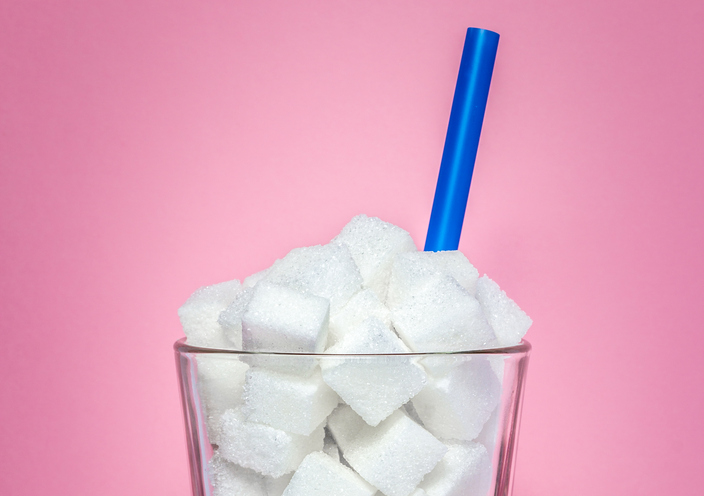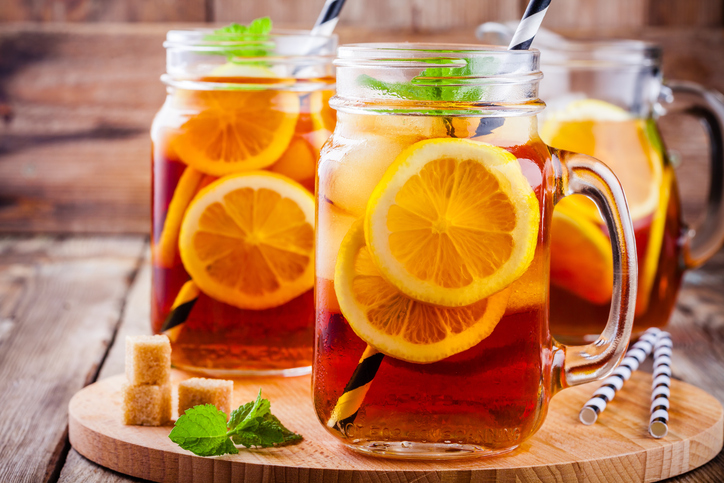
Sugar is hidden in so many things we eat and drink that it's almost impossible to go through a day without consuming at least a little bit of sugar. But when you take in too much sugar it affects your blood, your organs, and your overall health leading to a number of diseases. So, here are a few signs to look for:
Tired/Fatigue
If you’re feeling drained of energy for a prolonged period, you might be addicted to sugar. In this case, eating a small amount of sugar can give you energy, but this is only a temporary solution which will make you crave the ingredient more shortly afterwards.
Frequent Colds and Flu
Excess sugar in the body will attack and weaken the immune system, resulting in frequent colds and the flu, as well as being more prone to various diseases. If you're more prone to getting the sniffles, sinus issues, or coughs, you might want to start eating and drinking less sugar
Dark Circles Under Your Eyes / Skin Issues
Sugar is a highly inflammatory compound which can cause numerous skin problems such as rosacea, acne, oily or dry skin and eczema. It can also be the reason for those unsightly dark circles under the eyes and can cause numerous inflammatory conditions as well.
High sugar consumption has been linked to adrenal fatigue as well, which is why it’s so important to ditch it and switch to healthier alternatives.

Changes In Your Taste Buds
As our body craves sugar and we consume it in excess, our taste buds become used to it and their tolerance to sugar goes up and up.
This can cause a change in the taste of foods and can be resolved by eating less sugar every day. Once your taste buds get used to this situation, you will adjust your sugar tolerance and free your body from the sugar chains.
Foggy Brain
Are your thoughts foggy? Brain fog after meals is another symptoms of consuming way too much sugar.
It may also occur after digesting sugary drinks. Sugar can boost your glucose levels instantly, but the effect fades soon, and this inconsistency results in cognitive problems such as brain fog and the inability to focus.
Weight Gain
Weight gain is one of the worst symptoms of sugar addiction. Sugar is essentially empty calories as it doesn’t contain protein and fiber, so the more you consume, the fattier you’ll get. Excess sugar amounts can make the pancreas produce more insulin, leading to insulin resistance and an increased risk of diabetes.
Sugar cravings
You would think that you if you have a lot of sugar, you wouldn't crave it as much. Wrong. If you’re craving sugar very frequently, you’ve probably turned into something many in the U.S. are: a sugar addict. Sugar is highly addictive and makes you eat it more and more, resulting in several health problems.
Can't Believe It's Not Sugar: Sweeteners For People With Diabetes
There are plenty of sweet foods on store shelves and in refrigerated display cases that don’t actually have sugar in them. Manufacturers make these foods with non-nutritive sweeteners—reduced-calorie, low-calorie and no calorie sugar substitutes. These sweeteners are created from alcohols, amino acids, and other chemical formulas that have been approved by the Food and Drug Administration (FDA) for dietary use.
Sugar alcohols are one type of reduced-calorie sweetener. Sugar alcohols provide a sweet taste with fewer calories per gram than table sugar (sucrose) and are commonly used in place of sugar and often in combination with artificial sweeteners. Contrary to their name, sugar alcohols are not sugar or alcohol the way we think of them. They do not contain the type of alcohol found in alcoholic beverages.
When you’re reading food labels, you’ll recognize sugar alcohols easily because their names always end in “ol”—sorbitol, xylitol, erythritol, maltitol, and mannitol. Keep an eye out for these because they should be used in moderation. Using large amounts of sorbitol (more than 50 grams a day) or mannitol (more than 20 grams a day) can cause abdominal gas, bloating, and diarrhea.
Low-calorie sweeteners are also known as sugar substitutes. They provide practically no calories and won’t increase your blood glucose levels. There are lots of them on the market these days. They can be used alone to sweeten foods and beverages such as iced tea or coffee, or as an ingredient in other products.
Common sugar substitutes include:
Acesulfame K also called acesulfame potassium, or ace-K is 200 times sweeter than sugar. Packaged under the brand names Sweet One, Sunette, and Swiss Sweet, it is used in cooking, baking and as a table top sweetener. It can be found in desserts, puddings, soft drinks, candies, and canned foods.
Aspartame is a combination of the amino acids phenylalanine and aspartic acid. It is 220 times sweeter than sugar. Brand names are NutraSweet, Equal, and NutraTaste. You'll find it in low-calorie beverages and dry drink mixes, puddings and fillings, frozen desserts, and yogurt. People with phenylketonuria (PKU) – a rare genetic condition that affects metabolism, should not use aspartame.
Monk Fruit, an extract from monk fruit is 250 times sweeter than sugar. It is used as a tabletop sweetener, food ingredient, and component of other sweetener blends. Brand names are Nectresse, Monk Fruit in the Raw, PureLo and LowSweet.
Neotame can be used as a sweetener and flavor enhancer, and it’s a whopping 8,000 times sweeter than sugar. You’ll find it in baked goods, soft drinks, chewing gum, frosting, frozen desserts, jams and jellies, gelatins, puddings, processed fruit and fruit juices, and syrups. It can be used alone or blended with other sweeteners.
Saccharin has been used as a no-calorie sweetener for over 100 years. Saccharin is three hundred times sweeter than sugar. It can be found in sugar-free foods and beverages including baked goods, jams, chewing gum, canned fruit, candy, dessert toppings and salad dressing. Brand names are Sweet'n Low, Sugar Twin, and Necta Sweet.
Stevia is an extract from the leaves of the stevia plant. It's 200 times sweeter than table sugar and can be found in a variety of foods and beverages and tabletop sweeteners under the brand names Truvia, PureVia, and Enliten.
Sucralose is made from sugar but is 600 times sweeter than sugar. Sucralose, brand named Splenda can be found in a broad range of foods, beverages, and table top sweeteners.
Having diabetes does not mean you have to use no calorie sugar substitutes. There is no one sweetener that is best for people with diabetes. If you don't like the taste of faux sugar, you can work nutritive sweeteners such as agave nectar into your diet. Just work closely with your registered dietitian nutritionist or diabetes health care team, keep a careful eye on your blood glucose and balance your diet carefully. Click here to find a registered dietitian nutritionist near you.
 Constance Brown-Riggs, MSEd, RD, CDE, CDN is a registered dietitian, certified diabetes educator, national speaker and author of The African American Guide to Living Well with Diabetes.. She is a Dannon One Yogurt Every Day Nutrition Advisor.
Constance Brown-Riggs, MSEd, RD, CDE, CDN is a registered dietitian, certified diabetes educator, national speaker and author of The African American Guide to Living Well with Diabetes.. She is a Dannon One Yogurt Every Day Nutrition Advisor.








